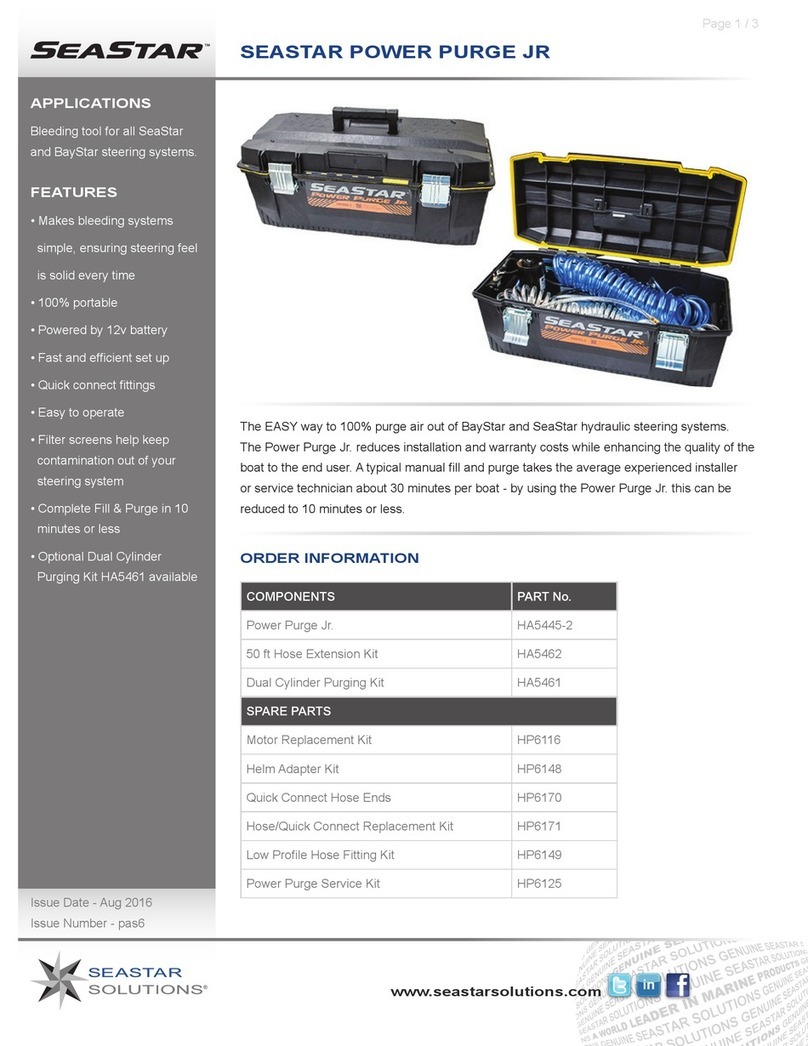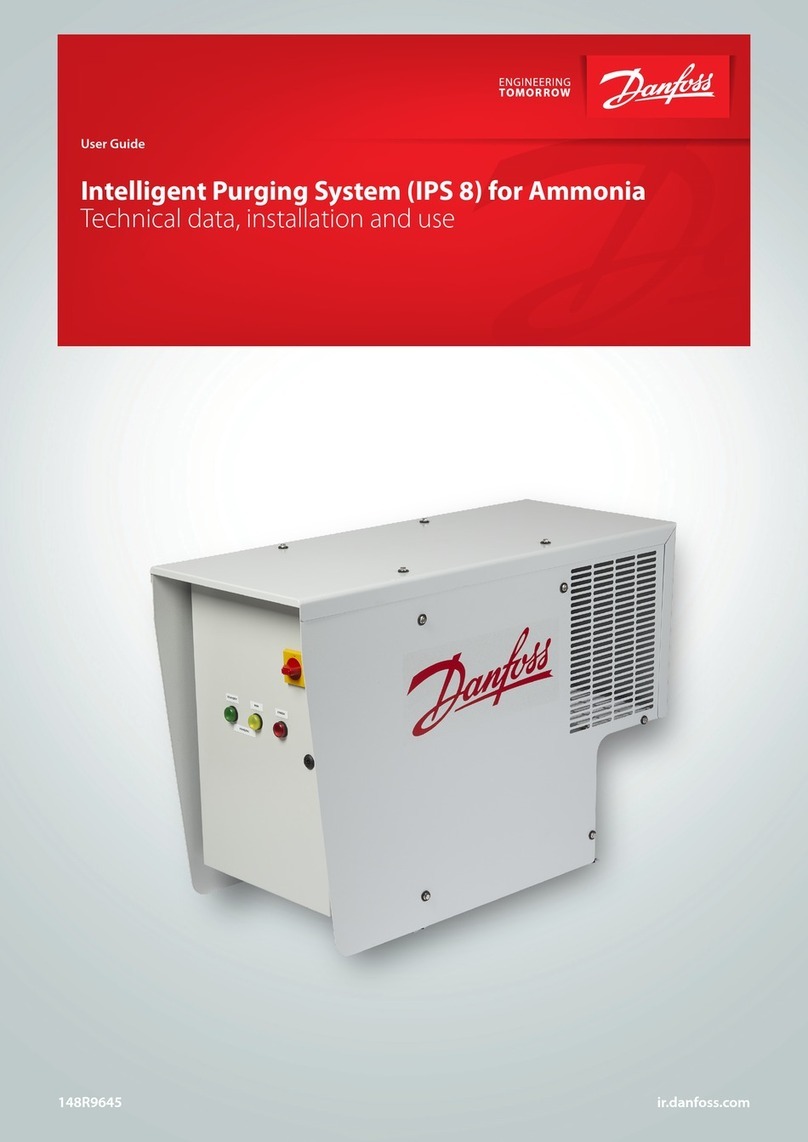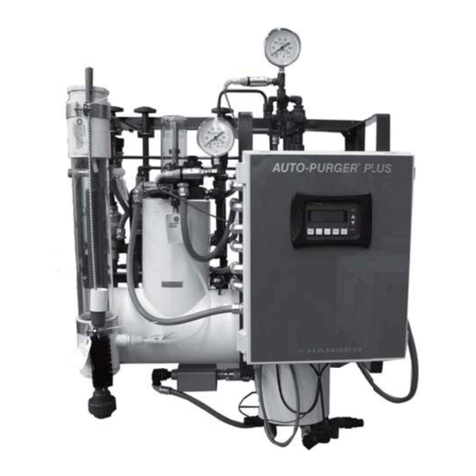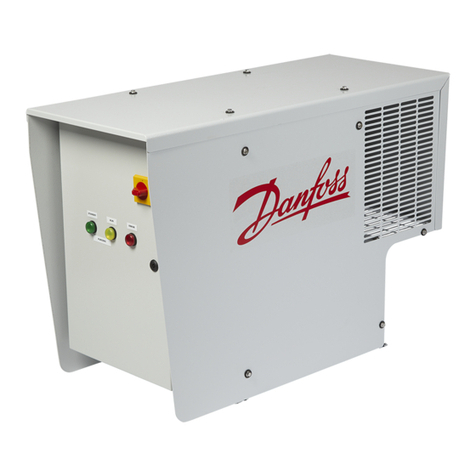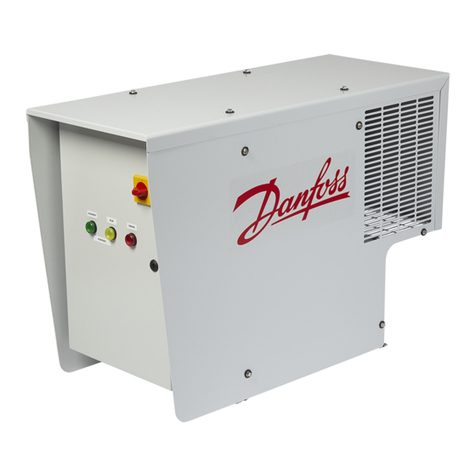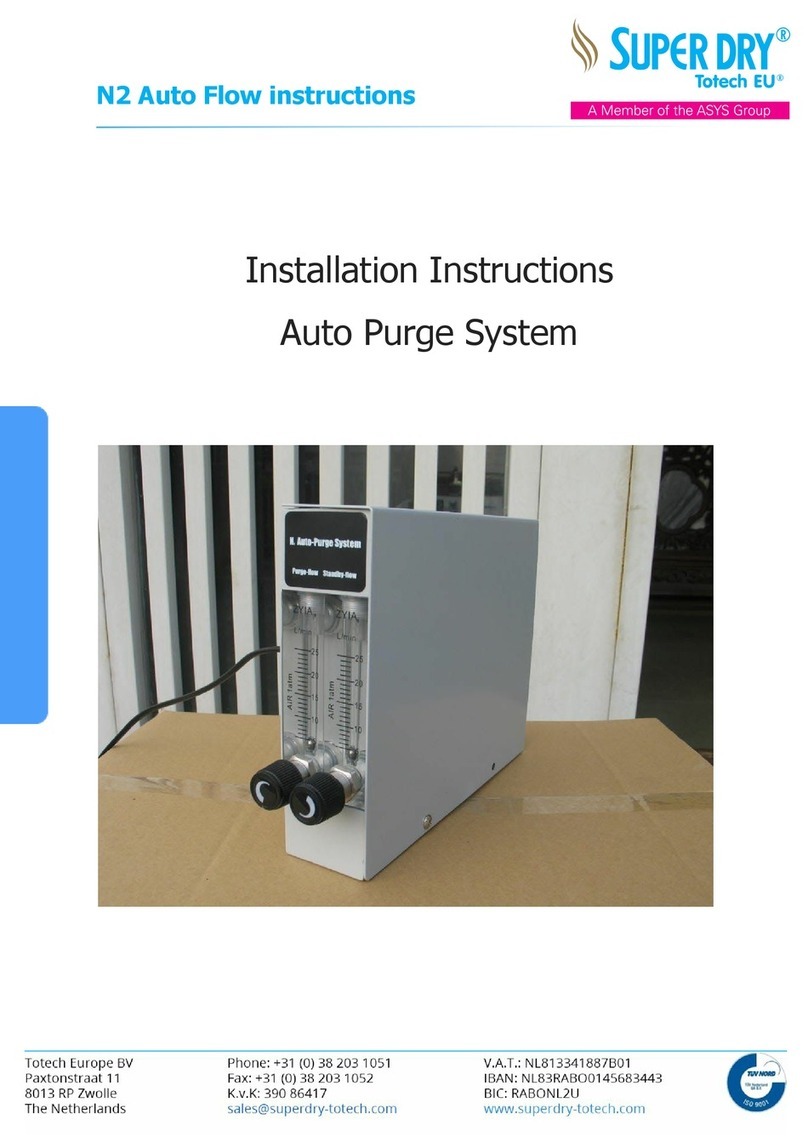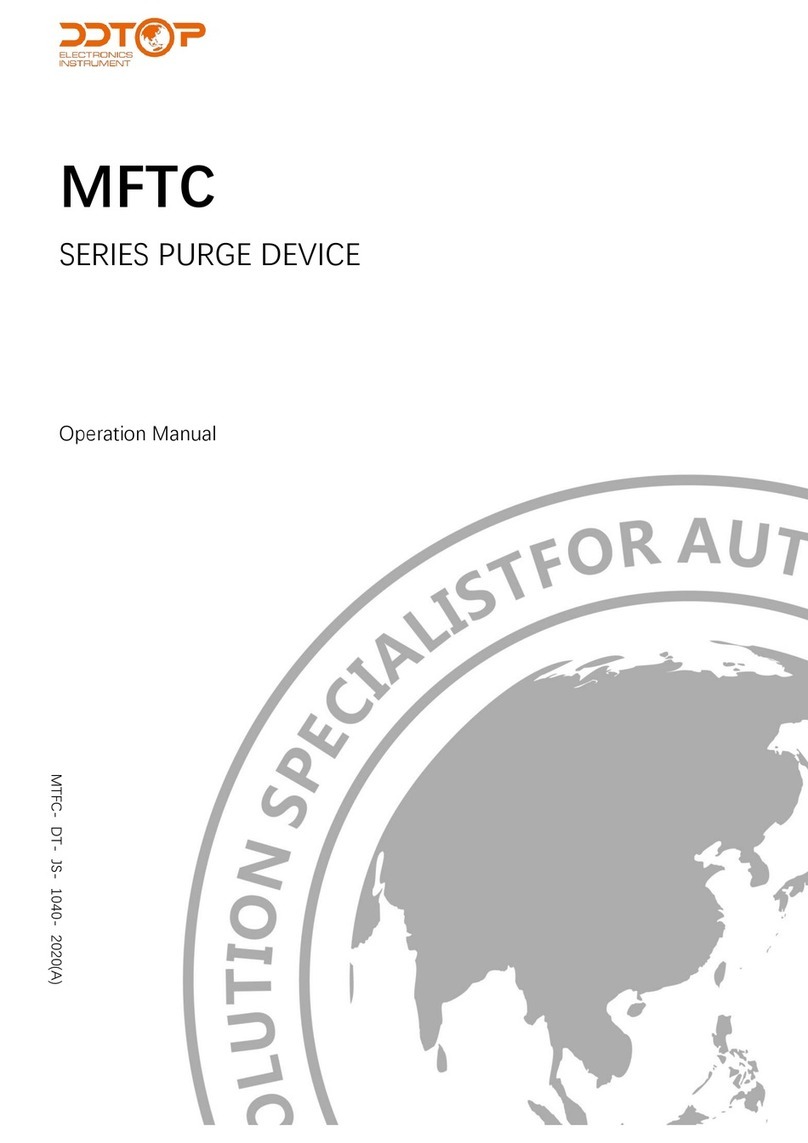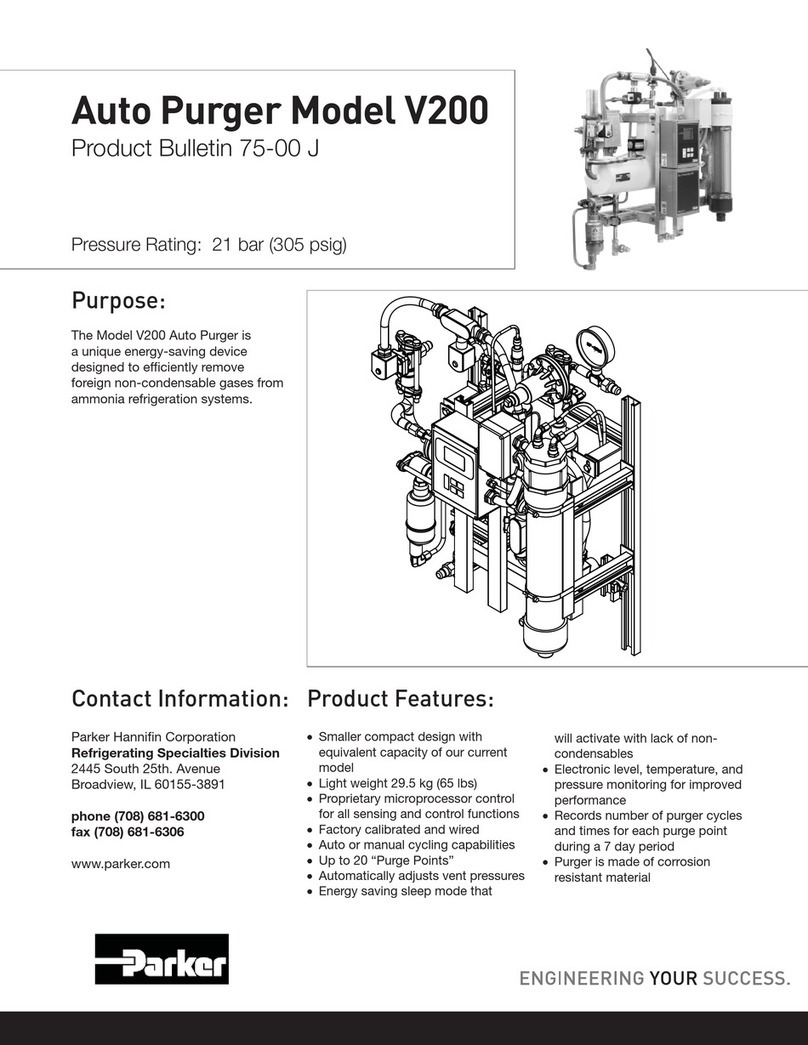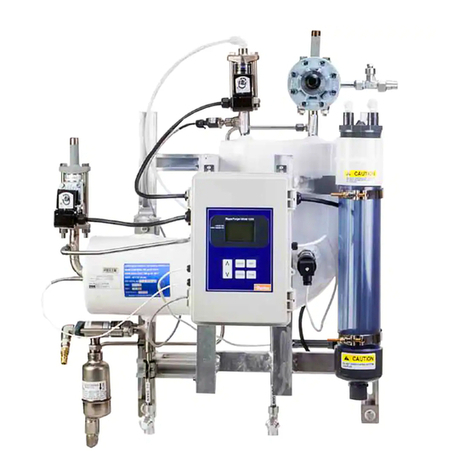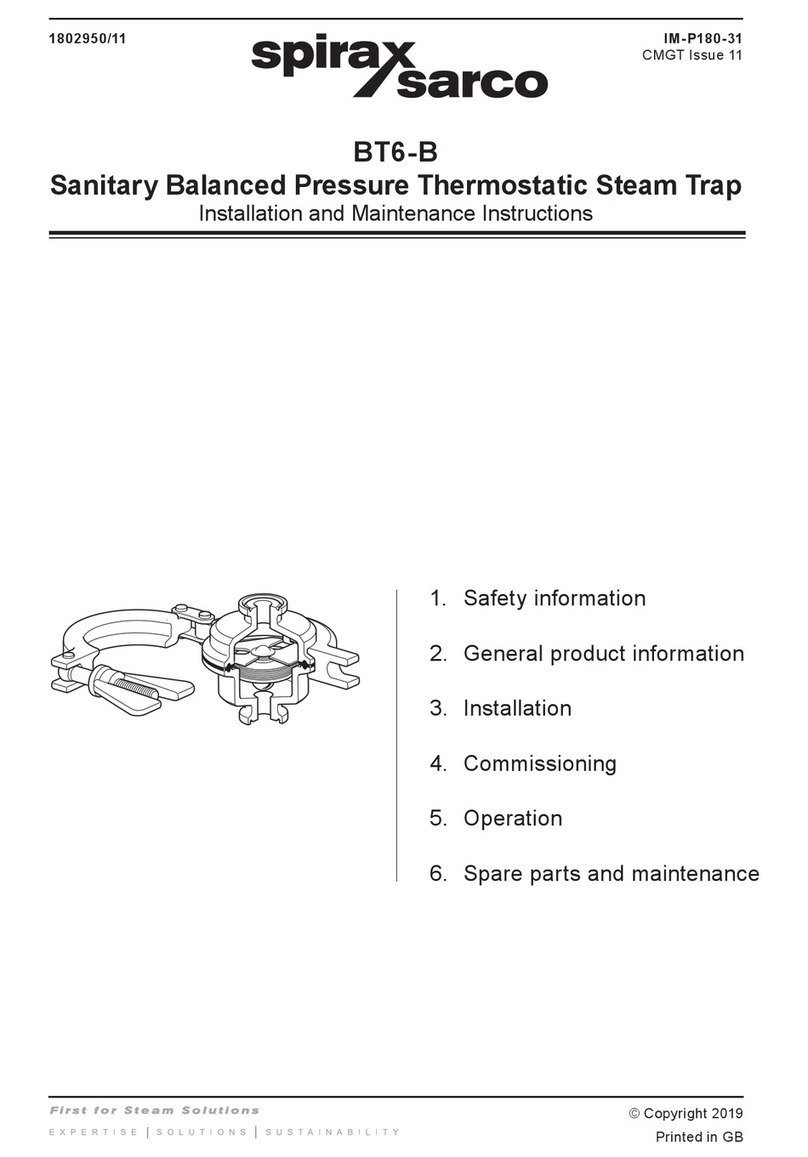
10
APM-001e
AUG 2015
DIGITAL READOUT FLASHING 2222
LOSS OF FOUL GAS PRESSURE. This usually means
the pressure in the air separator chamber is below 80 psig
(5.5 bar). Pressure gauge on the purger reads near suction
pressure. The purger will not allow noncondensible gases
to be released from the purger. However, the purger will
continue to operate normally in all other functions.
REASON 1:A burned-out purge point solenoid coil.
Check: Check the remote purge point solenoid 3 amp
fuse for continuity. Replace if necessary. Advance
purge points one at a time with the purge point advance
button, waiting approximately 2 minutes before advancing
again. Wait until the fuse opens or the digital readout
again flashes 2222. The faulty coil or wiring is now
pinpointed.
Action: Replace the coil or repair the wire, and replace
the 3 amp fuse (p/n 20-1698).
REASON 2: A remote purge point solenoid valve is jammed
closed.
Check: Inspect the remote purge point solenoid valve
which caused the diagnostic code to appear. Manually
open the solenoid valve and recheck the pressure.
Action: If the coil is energized, clean and replace any
solenoid valve parts as necessary. See also the Caution
section on page 14.
REASON 3: Foul gas line restricted.
Check: Inspect the Foul gas line for a closed shut-off
valve(s) or the plastic shipping cap still in foul gas line
flange.
Action: Open shut-off valves and/or remove the shipping
cap. See also Caution section, page 14.
REASON 4: Faulty pressure transducer.
Check: With the purger in any operational mode, check
the pressure gauge reading. If it is above 80 psig, check
pressure transducer plug-in connector terminals 27 &
30 for 10 volts DC. Then check terminals 28 & 29 for at
least 13 mV.
Action: If terminals 27 & 30 do not have 10 volts DC, check
for faulty wiring. If terminals 28 & 29 do not have at least
13 mV, replace the pressure transducer (p/n 20-1857)
with the purger at zero pressure. See also the Caution
section on page 14.
DIGITAL READOUT FLASHING 3333
PURGER TOO WARM. If the purger evaporator temperature
is 40°F (4.4°C) or warmer, the purger will not release
noncondensible gas from the purger because excessive
refrigerant would also escape. The purger will continue to
operate normally in all other functions. This code is also
displayed during initial start-up until the purger flooded
evaporator is cooled down.
REASON 1: Suction temperature too high.
Check: Verify the pressure at the purger suction line
connection.
Action: Connect to a lower-temperature suction.
REASON 2: Restriction in the suction line.
Check: Inspect the suction line and shut-off valves. These
should be a minimum size of ¾”. On new installations,
also make sure the plastic shipping cap in suction line
flange is removed.
Action: Eliminate the restriction. See also the Caution
section on page 14.
REASON 3: The flooded evaporator inside the purger is
not filled with refrigerant.
Check: Look for a closed liquid line shut-off valve,
Also, check that the liquid line solenoid valve (B) is
energized.
Action: Open the liquid line shut-off valve. If not energized,
check for voltage at the liquid line solenoid valve coil.
Replace the coil if it is burned-out.
REASON 4: Faulty temperature sensor.
Check: With the temperature sensor plug-in connector
disconnected from power board (see Figure 4), check
the electrical resistance of the sensor across the wire
leads.
Action: If the resistance is not between 30 K ohms and 486
K ohms, replace the temperature sensor (p/n 20-2303).
See also Caution section on page 14.
DIGITAL READOUT FLASHING 4444
PURGED OVER 60 MINUTE TIME LIMIT. If noncondensibles
are released from the purger for 60 minutes continuously, a
time delay will close the purge gas solenoid valve (C). This
limits the possibility of a substantial amount of refrigerant
inadvertently being released into the water bubbler in the
unlikely event of purger malfunction.
REASON 1: A large volume of noncondensibles is
continuously being removed from system.
Action: Reset the time delay by momentarily turning the
APM to Purger Switched Off and back to the desired
operation mode. Delay is now reset for up to another
hour of continuous purging. Otherwise, put the purger
in New System Start-up mode for continuous purging
without the 60 minute time limit.
REASON 2: Purge gas solenoid valve (C) is not opening
or the removable seat/orifice is blocked.
Check: Make sure purge gas solenoid valve (C) is energized.
If not, check for voltage at solenoid coil.
Action: Replace the coil if it is burned-out, otherwise clean
or replace the removable seat/orifice inside the solenoid
valve body. See also the Caution section on page 13.
REASON 3: The shut-off valve located before the purge
gas solenoid valve (C) is closed.
Check: Verify that purge gas is not being sent to the
bubbler.
Action: Open the valve.
SECTION 4 TROUBLE SHOOTING PURGER OPERATION


